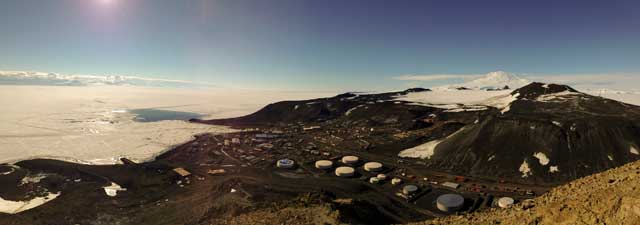|
Water, water everywhereIce clears out of large area of McMurdo Sound in JanuaryPosted January 31, 2014
It's easy to think of Antarctica as an unyielding, unchanging place, forever in a frozen stasis. But the month of January has shown just how quickly things can evolve. Much of the sea ice that fills McMurdo Sound has blown out into the Ross Sea What is really unusual is the timing. The maximum breakout usually occurs around the end of February or the first week of March, according to a 1963 scientific paper by A.J. Heine. Any open water in front of Cape Armitage, the part of Ross Island that is farthest from the top of the photo above, is frozen over again by late March. Heine wrote that the main factors affecting the breakout of the sea ice are "probably a combination of heavy swell, caused by a storm in the open water of the Ross Sea, followed by a strong wind from the south." This year's breakout also seemed to be stimulated by the work of the U.S. Coast Guard cutter Polar Star The clearing of McMurdo Sound also opens the way for wildlife. Adélie and emperor penguins, Weddell seals, along with minke and killer whales, have been spotted as far south as New Zealand's Scott Base For more about this topic, see Bill Spindler's Sea Change in McMurdo Sound webpage |



For USAP Participants |
For The Public |
For Researchers and EducatorsContact UsU.S. National Science FoundationOffice of Polar Programs Geosciences Directorate 2415 Eisenhower Avenue, Suite W7100 Alexandria, VA 22314 Sign up for the NSF Office of Polar Programs newsletter and events. Feedback Form |




